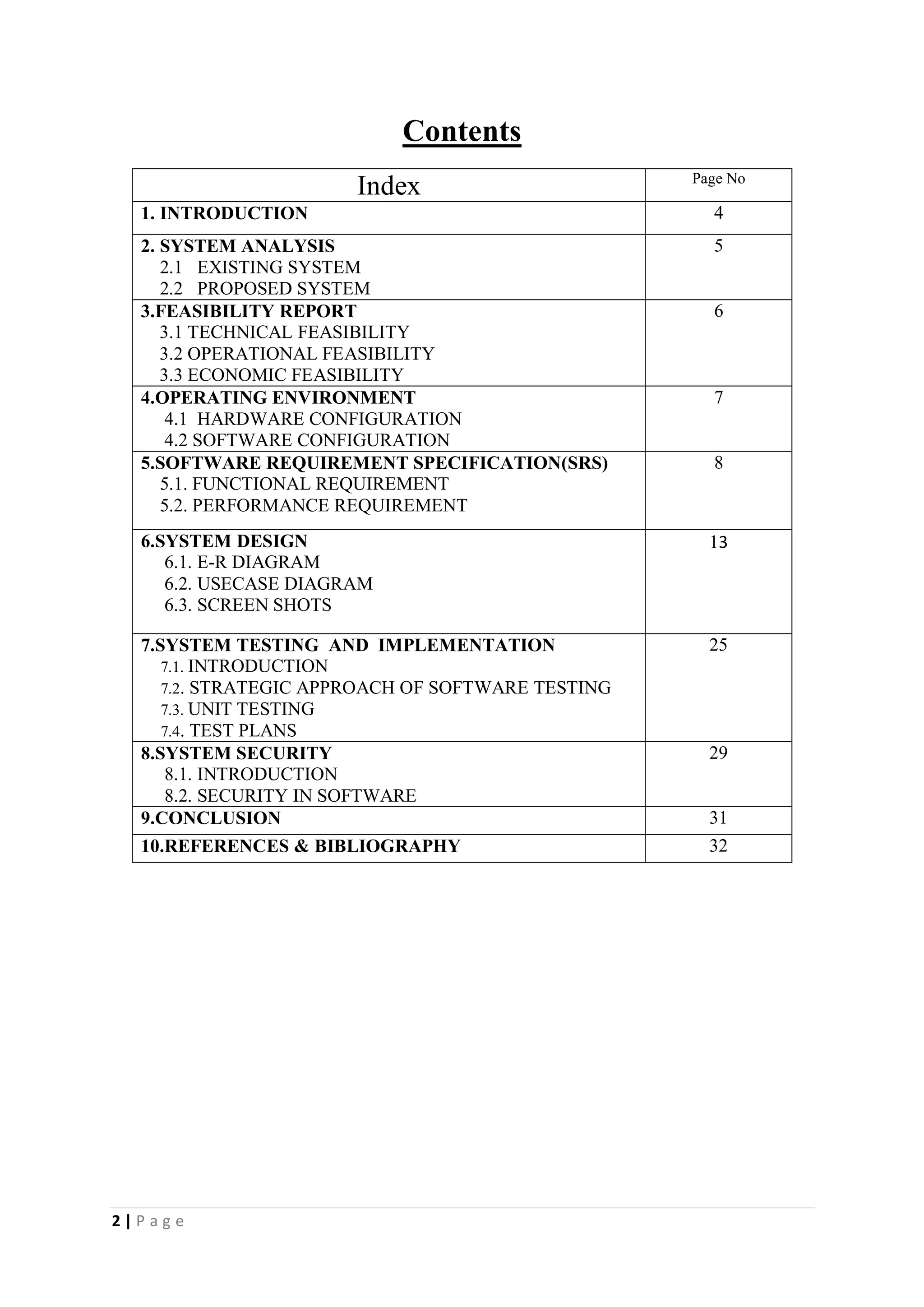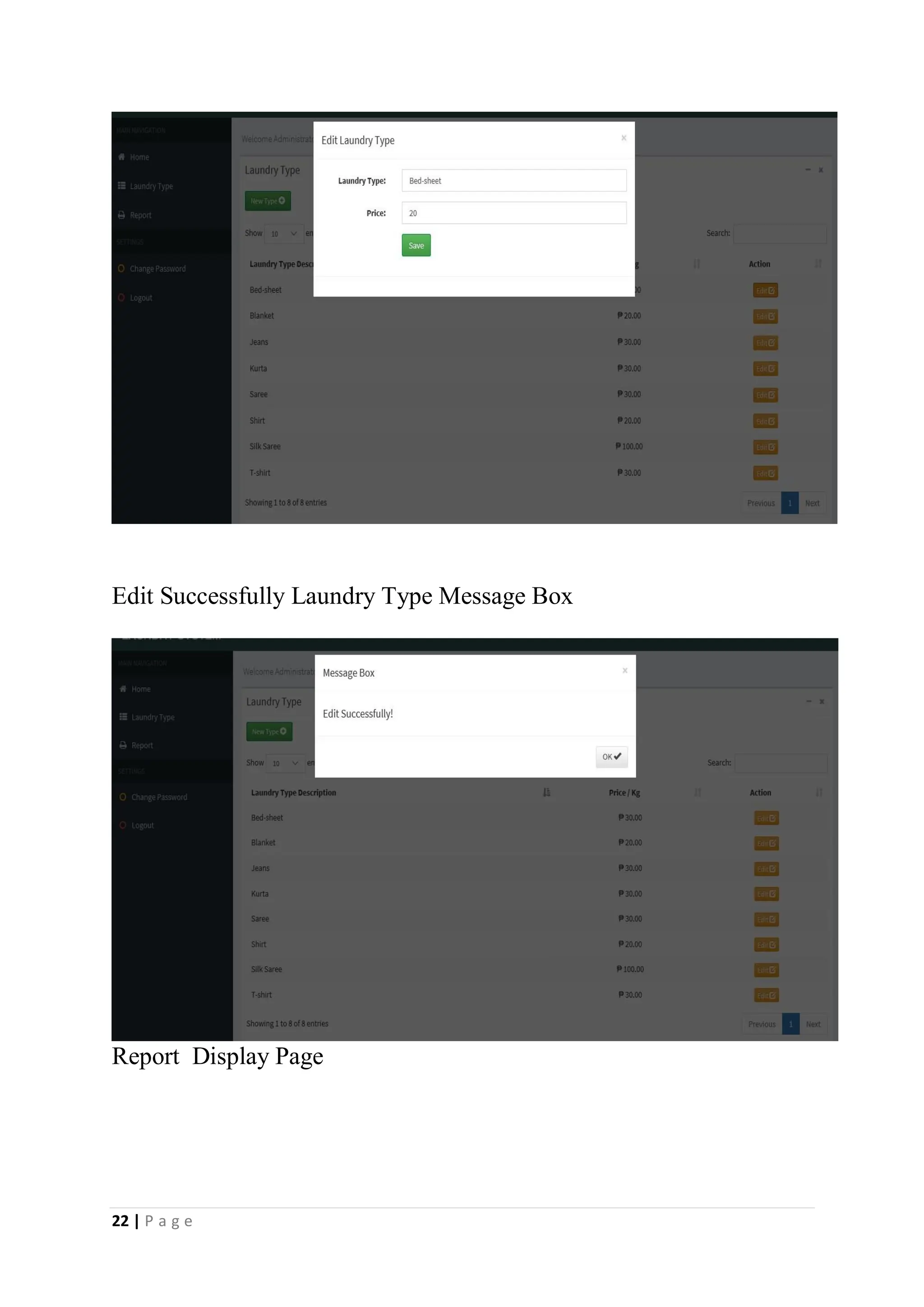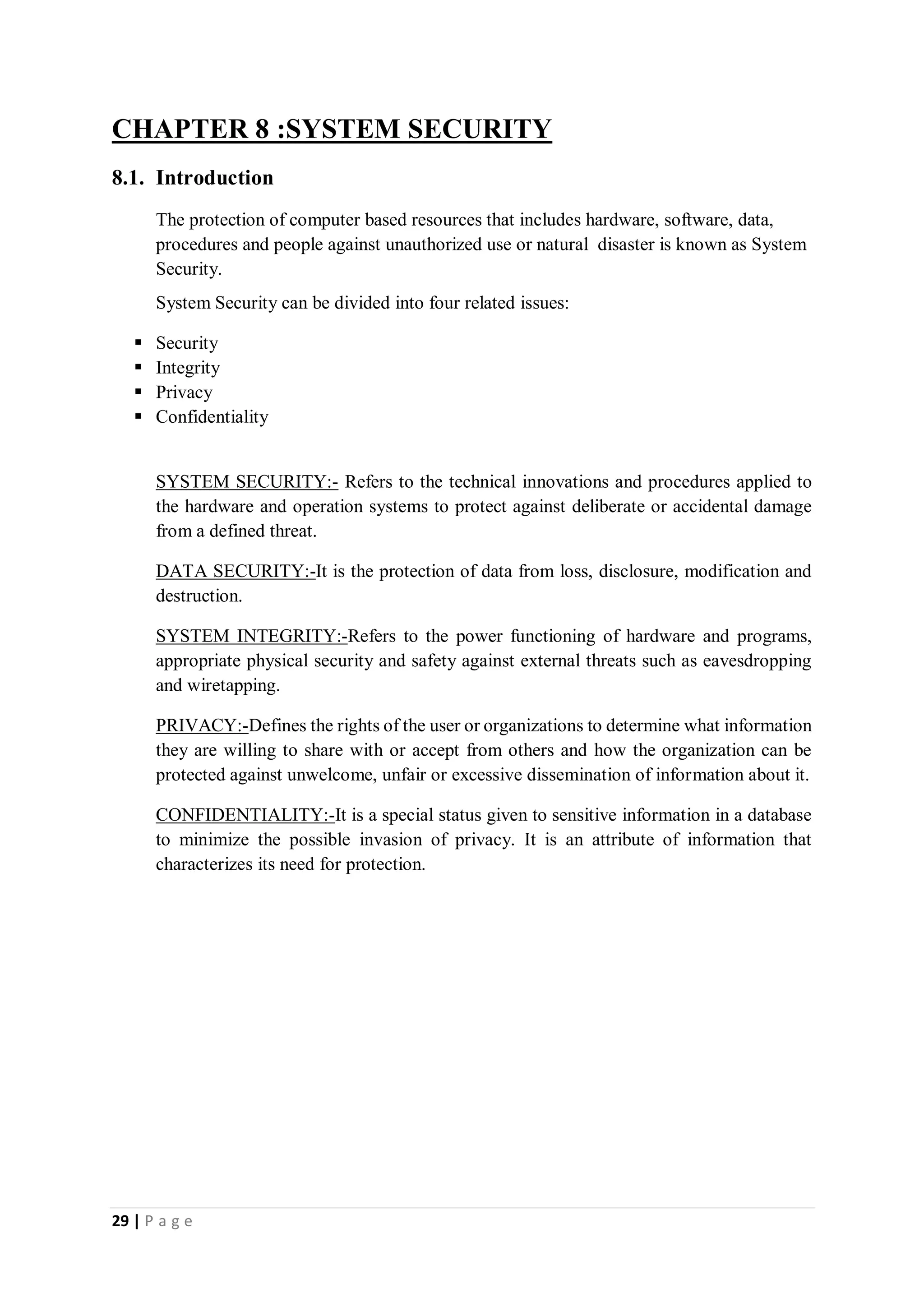The document is a comprehensive internship report detailing the design and implementation of a laundry management system to replace a manual system currently in use. It covers aspects such as system analysis, feasibility studies, software requirements, operating environment, and testing methodologies. The proposed system aims to improve efficiency and accuracy in managing customer information and laundry records.

































